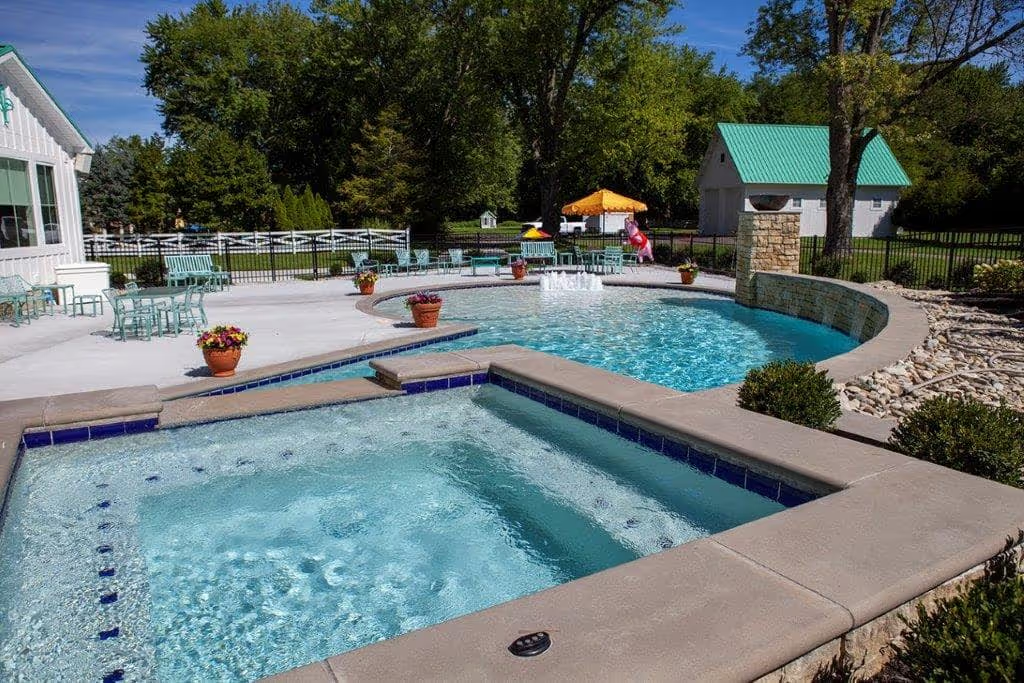- Stone Center
- Blog
What Is Bluestone and Why Is It Popular in Landscaping?
3/10/2023
9/5/2022
What Is Bluestone and Why Is It Popular in Landscaping?

Bluestone material has been used in landscaping for decades, and for good reasons.
Offering a natural look and beautiful earth tones, bluestone landscaping has been a go-to choice to design beautiful outdoor spaces with stunning natural stones. But what is bluestone exactly, and what makes it so much more popular than other materials? To help understand the popularity behind bluestone landscaping and why it may be perfect for redesigning your outdoor space, our team at Stone Centers is breaking down all the details below.
What Is Bluestone?
So, what is bluestone?
Bluestone is a natural stone often used in landscaping and hardscaping projects. Typically found with a blueish color, it can also come with veins of grey and brown for added texture and dimension. With this cool hue and durable composition, bluestone is commonly utilized for stone steps, pool decks, patios, walk paths, and more.
What is bluestone made of? This depends mainly on where it’s found - either in the Shenandoah Valley or Pennsylvania. Additionally, the actual color of bluestone depends largely on where it is mined. Pennsylvania bluestone is a type of sandstone, a sedimentary rock made of grains the size of sand found in Pennsylvania. Depending on where it is found within the state of Pennsylvania, this type of bluestone can come in rust, tan, brown, grey, and blue hues.
Shenandoah bluestone, on the other hand, is a type of limestone. It’s a sedimentary rock primarily made from calcium carbonate and mined in the Shenandoah Valley in Virginia. This form of bluestone is a greyish-blue color and gets greyer with time.
What Are the Different Types of Bluestone?

From pattern and gauged, to natural cleft, polished, flagstone, and true blue, there are many different types of bluestone available for your next landscaping project. There are many different terms used to describe natural bluestone and the various bluestone colors. To help you better understand and find the right bluestone material for your landscape, we are sharing the below details.
Pattern
Pattern Bluestone is made of slabs of bluestone with varying sizes and shapes. When many think of bluestone, they think of the pattern style, with a mix of squares and rectangles of different sizes. Usually coming as 1.5 and 1-inch thick slabs or thicker, this style of bluestone is ideal for countertops and stairs. It is commonly seen in natural cleft, thermal, full color, and true blue styles, and can interchangeably be referred to as flagstone.
Gauged
Gauged Bluestone is commonly found as thermal pattern bluestone. The term “gauged” is used for this type of bluestone due to the consistent dimension of the stone, usually created by laser-guided saws and precision milling equipment. With a high-quality mill, this stone can be cut as slim as 1/16”. Typically, more affordable stones are not gauged to tolerances this close, which can make installation a bit more challenging.
Natural Cleft
Natural Cleft bluestone is a stone that is split as opposed to sawn. This term is used to refer to the surface texture of the stone. The weak layers in the stone allow it to be separated into slabs, leaving a textured surface. This is ideal for buyers as it offers more character and added traction. However, it’s not ideal for use in dining areas where chairs and other furniture will need a more sturdy base.
Thermal
Thermal bluestone refers to a stone that has been “thermalled” after sawing. Thermalling refers to the process of quickly heating the stone with a torch. This results in the surface of the stone popping, leaving a dimpled surface comparable to a golf ball. This thermalling texture erases saw marks from fabrication and can be used around the rough edges of sharper rocks.
Polished
Since bluestone is such a dense rock, it can be finished and manipulated in some ways, one of which is by polishing it. This is usually found on bluestone used as countertops or for pool coping, where a smooth surface is preferred. This polished finish is achieved by working the stone with diamond-impregnated sanding discs, morphing the stone from rough to as smooth as glass.
Sandblasted
Sandblasting bluestone is growing in popularity. This process leaves the surface lightly textured, although not in the same way as a natural cleft. While this does add an interesting element to the stone, sandblasting does also increase costs and skill requirements to achieve this finish. However, it looks beautiful for countertops, hearths, and stairs.
Full Color

Full-Color bluestone refers to a stone that was collected from different deposits. This results in varying colors in the stone, ranging from light blue to dark brown, and even rust. Single stones can be found with a color shift within the individual piece for a beautiful result. And while it offers a stunning finish, since it doesn’t need to be premium selected. Full-Color bluestone offers a lower cost than other variants.
True Blue
True Blue essentially refers to premium select bluestone. This is a stone that has been chosen for its consistent color, and can include different shades of blue but doesn’t shift hues within single stones, and will not include any brown or blemishes. Due to their consistent color, this stone comes at a premium price.
Flagstone
Flagstone is a term very commonly used in the industry to refer to a range of different products. This term, in its simplest definition, refers to slabs of flat stone. However, we typically use this term to refer to a stone that is irregular, natural cleft, full-color blue stone.
Sawn
Sawn bluestone is a stone that, very simply, has been sawn to a specific size. Typically, this style of stone is thermalled for texture.
Snapped Edge
A snapped edge stone is one that has been broken to reveal a rough, irregular texture. This is commonly used for retaining walls where that rough surface is preferred and an exact measurement isn’t needed. This snapping results from a hydraulic press or guillotine, but can also be achieved with a chisel or a hammer. This stone can also be referred to as “rock facing”.
Rock Facing
Rock facing refers to the process of chiseling and hammering a stone for a rough, yet controlled, surface. There are different styles of rock-facing stones, and it requires specific tools and knowledge to achieve.
The Pros of Bluestone in a Landscape

There are several pros and cons of bluestone in a landscaping project, but let’s start with the positives.
One of the biggest benefits is the bluestone durability. This material is used in a number of projects since it is highly durable, with a dense composition and hardness that allows it to remain strong through harsh weather conditions. This is due, in a large part, to the texture of the bluestone.
Additionally, bluestone is a naturally non-slippery material, which is ideal for safety in outdoor spaces, such as around a pool. The texture of this stone allows it to avoid becoming slick when wet, with a rough texture that ensures your safety and improves the lifespan of the stone.
Bluestone is also widely available in various thicknesses and dimensions and is easy to install in your landscape. Plus, with a natural blue hue, it offers a gorgeous element to every design, all at a relatively affordable price.
The Cons of Bluestone in a Landscape
While bluestone is relatively affordable for its stunning appearance, it is quite a bit more expensive than synthetic materials. Since it’s a natural material, prices are higher, although this can vary based on how far you’re shipping it.
Additionally, since bluestone is a naturally occurring material, it’s likely you will receive a stone with an irregular pattern and shape. While this is what makes each stone unique, it can make it a bit more challenging to install.
Lastly, bluestone offers a gorgeous deep blue hue, and while this is stunning in a number of designs, it does absorb heat as well. This means the stone will get very hot during the summer months and can burn bare skin in areas you may walk without shoes.
Common Uses of Bluestone
The bluestone material is used by both individuals and companies for some different projects, highly relied upon due to its resistance to slipping and scratching. But what industries rely upon this material most?
With so many perks, bluestone is used for:
- Building walls or as a thin stone veneer.
- To make tiles or other products.
- As countertops as opposed to marble or granite.
- Paving projects, including steps, paved gardens, driveways, and courtyards.
- Construct walls.
- Pedestals.
- Headstones.
- Building waterfalls, fountains, and ponds.
- Around the edges of pools.
Clearly, there’s no limit to where bluestone can be utilized. This is due to different factors, including its non-slipping, textured finish. Additionally, bluestone doesn’t require a great deal of maintenance over the years, making it perfect for those outdoor installations. Ultimately, it’s a very safe and reliable stone and one that can add a great deal to any project.
Wondering how to incorporate bluestone landscaping into your next project? Here are some new ideas.
Patios
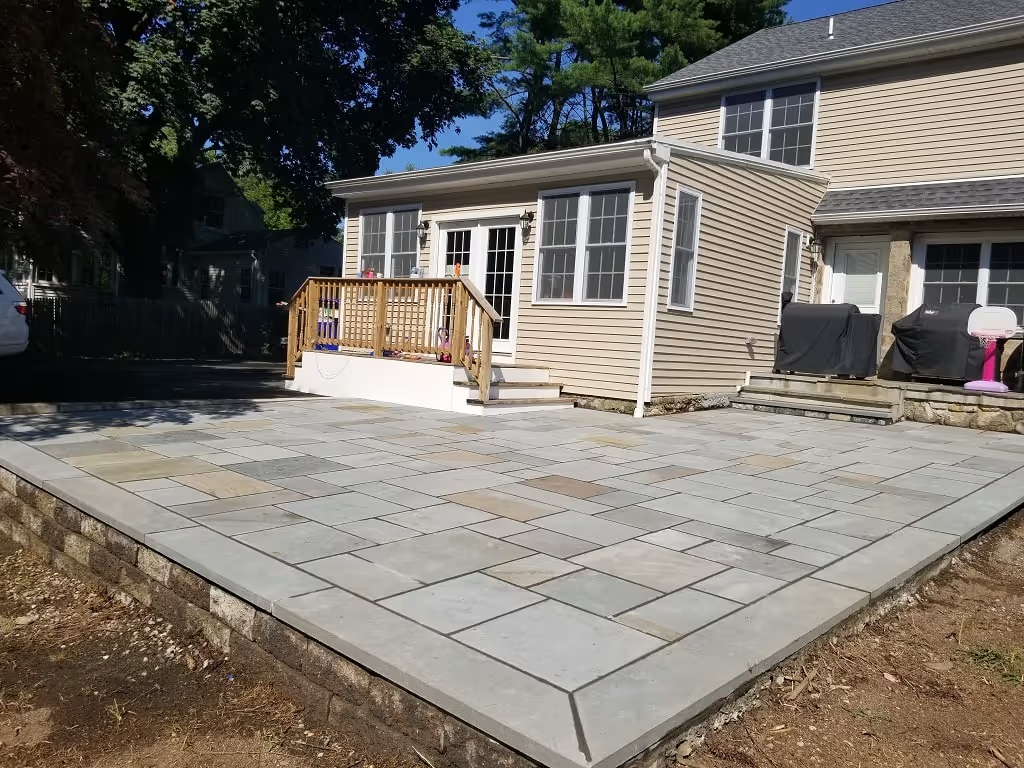
A patio made out of natural bluestone is a beautiful addition to any landscape, perfectly complimenting the green hues in a yard. This can be incorporated in several ways, including as a more natural addition with non-symmetrical cuts, or a traditional design with straight, carefully curated stones.
Fire Pit or BBQ
Outdoor fireplaces and stone barbeques have been growing in popularity in backyards, and bluestone can take yours to the next level. Ideal for those that love to host and to create a central place to gather, a bluestone fire pit can be a place where you make memories throughout the years.
Edge Gardens
For a unique way to edge a garden, bluestone makes the perfect solution. This is wonderful for placing along gardens and flowerbeds, creating lines while enhancing the overall appearance.
Walking Paths
Since it’s so great for patios, why not use bluestone for walking paths, too? A bluestone path can lead to your home, into the backyard, or through your garden for a complementary addition to your landscape.
Add Texture
Bluestone can also be used to add texture to your yard by building retaining walls to add more height and dimension to your space. This layer of natural stones will add color and lift your yard as you fill it with all the flowers you can imagine.
Water Features
Create a centerpiece in your backyard with a water feature made of bluestone. Whether you opt for a koi pond or water fountain, bluestone water features will elevate the calming energy in your yard.
Steps for Using Bluestone in Landscaping
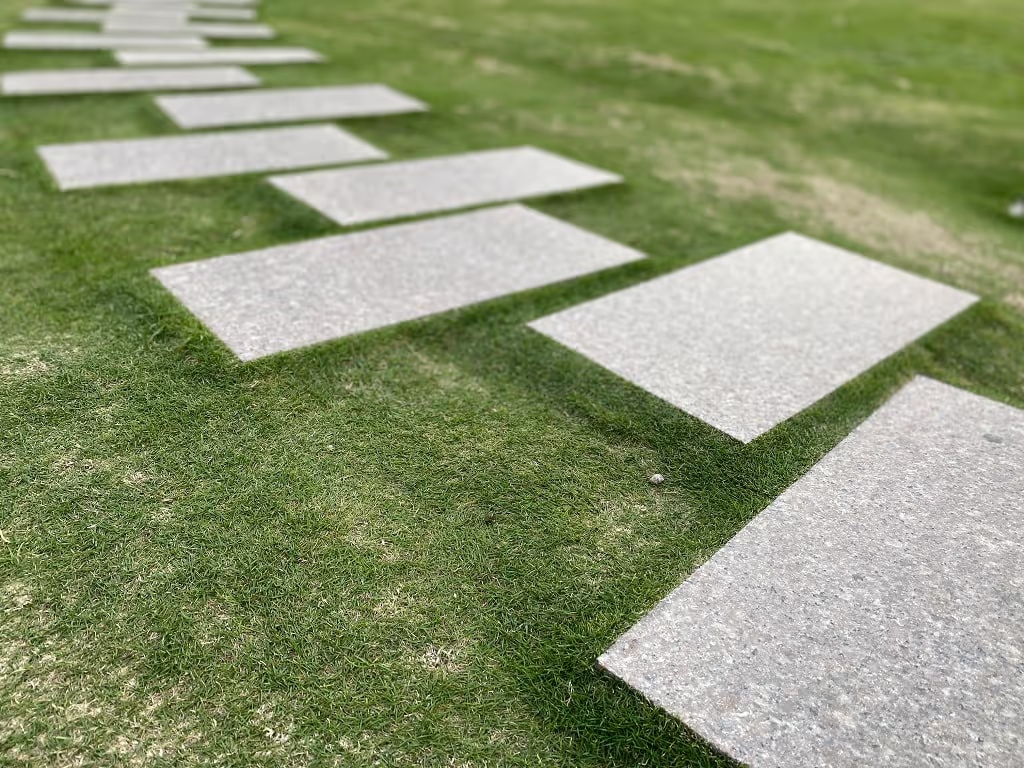
Natural bluestone can be utilized in nearly every outdoor design, whether it be as a patio, walkway, stairs, decorated boulders, steps, and more landscaping options. But how is it implemented?
With a simple step-by-step guide, you can implement bluestone in your landscaping. Here’s how it’s done.
Step 1: Preparation
Likely the most important step is the preparation. Before laying down bluestone, you must first understand the perimeter and grade of the project. This can be done using a laser level to ensure proper drainage. Then, mark stakes can be used to market areas that need to be filled or excavated.
Step 2: Excavate the Surface and Fill in the Gravel
Once the area has been thoroughly scoped, it is time to excavate and level the gravel. This begins by digging and leveling compact soil for a base that is around 7 inches below the top surface. Then, use a road bond as the base, which is stone dust that’s made from crushed gravel. This will form a strong foundation that’s both long-lasting and weather-resistant.
Step 3: Edging
The next step is edging. This is the process that keeps the materials stable using metal or concrete.
Step 4: Distribute and Label the Fines
Now that the edges are laid, we must now lay the fines, also known as stone dust. This should be poured and level 2 inches from the foundation, or based on the thickness of the bluestone.
Step 5: Lay the Stones
Lay the stones on the setting bed, pressing the stone into the foundation. This will help firmly lodge it in place.
Step 6: Shape the Stones
For a more polished finish, it’s important to shape the stones to be flush with the adjacent pieces. These pieces can be shaped with a chisel and mallet. With this process, be careful when chipping the bluestone so you don't make any unnecessary fracturing. Then, fill in gaps by shaping scrap pieces to the right shape or form.
Step 7: Fill the Gaps
Lastly, fill any unwanted gaps with stone dust. Do this until all the joints are filled and level.
How Much Does Bluestone Cost?
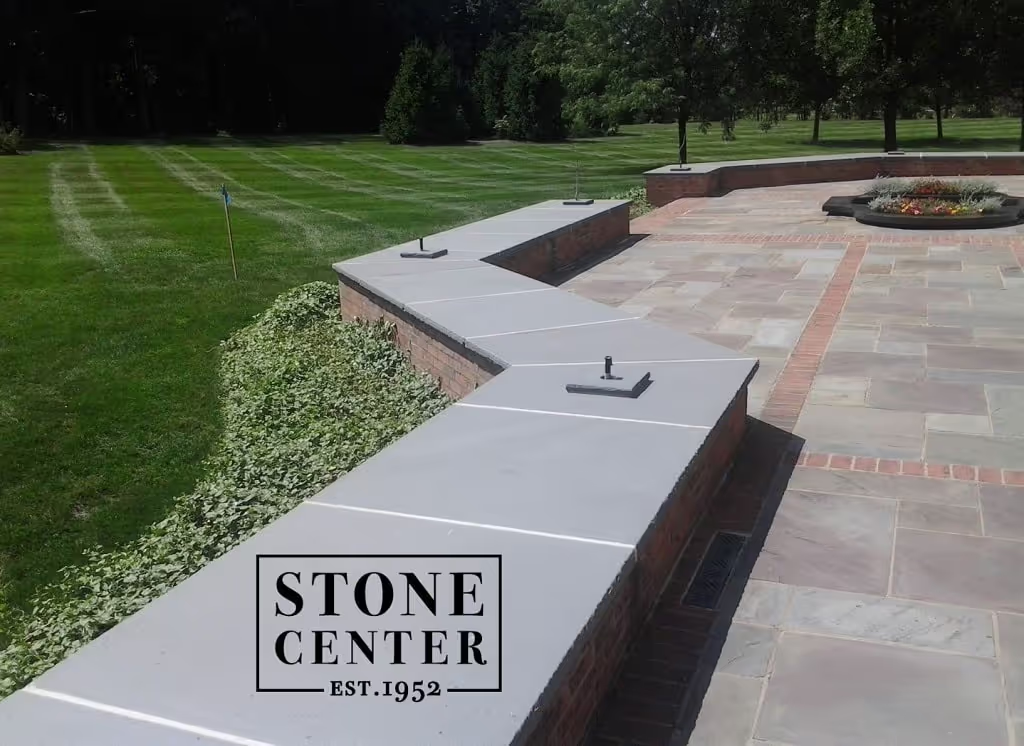
Now that you know all about the different ways to implement bluestone, how much does bluestone cost?
Typically, bluestone sourced from Pennsylvania and other areas in the US costs around $15 to $30 per square foot installed. This price can vary based on where you live, the pattern, thickness, and the size of your project.
It's important to keep in mind the other additional costs, beyond the material itself, that may be involved in incorporating bluestone into your landscape. This includes shipping prices, labor costs, and other materials like grout that may be needed.
Tips for Buying and Installing Bluestone
Before selecting your bluestone material, you must first consider if you prefer irregular or uniform-sized pavers. Typically, irregular is more challenging to install but may fit better within an existing design.
Furthermore, keep in mind that bluestone is a natural material, so even your uniform sizes will have imperfections, such as rust stains, small clefts, or crevices. Ultimately, these irregularities are part of what makes this material so beautiful.
Additionally, bluestone usually comes in around an inch to 1.5 inches thick. Depending on the thickness, this will cover around 180 square feet to 220 square feet per palette and can be installed on different materials, including sand, cement, or gravel, which is important to know before implementing.
Shop Bluestone at Stone Center!
Now that you know all about bluestone landscaping, the types of bluestone, and how much is bluestone worth, it’s time to invest in this gorgeous natural material for your next landscaping project.
To find the highest quality bluestone, and a team that knows just how to implement it in your landscape, contact us at Stone Centers in Ohio today.
FAQ
.avif)
Jon, the owner of Stone Center, is a knowledgeable expert in natural stone products, specializing in various types of stone for landscaping and architectural projects. Passionate about promoting the beauty and versatility of natural stone, Jon aims to use these blogs to inspire readers with creative ideas to upgrade their homes.
How much does it cost to get a stone restored?
How much you end up spending to restore stone varies on the type of stone, the technique, and the stone’s current condition. Stone in good condition will cost less to restore, whereas stone that has a lot of wear and tear may require a longer restoration.




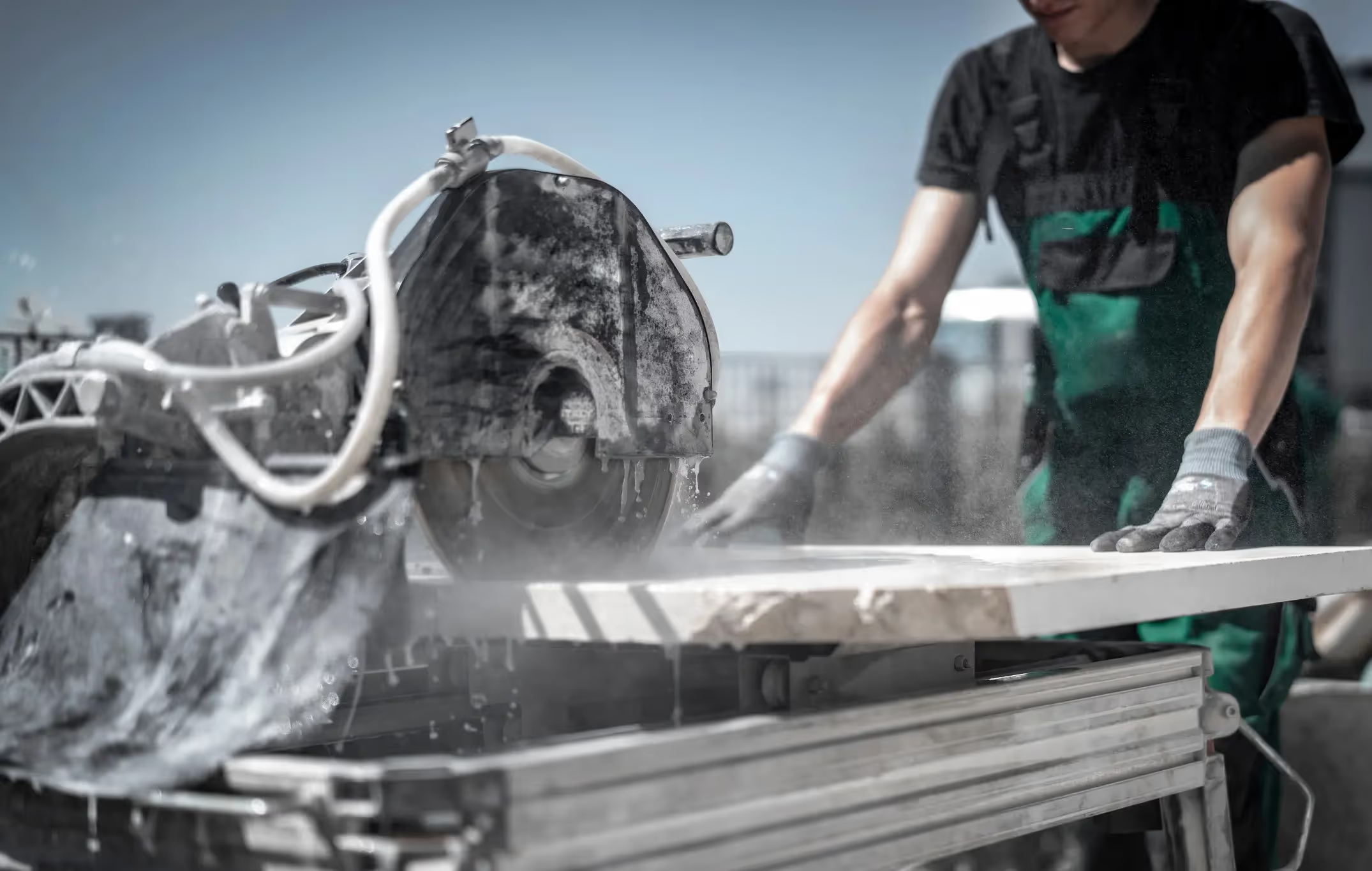


.avif)
.avif)
.avif)
